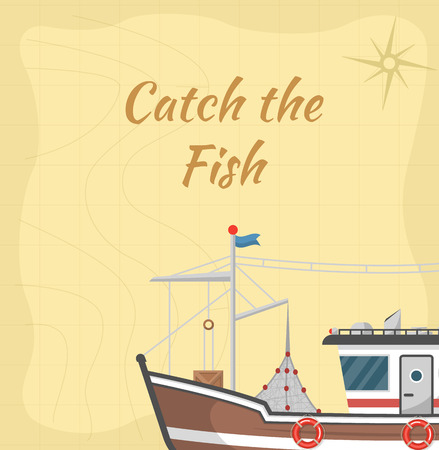Introduction to Drift Fishing in the UK
If you’re keen on exploring British angling, drift fishing is a technique that’s truly captured the hearts of many across the UK. But what exactly is drift fishing, and why has it become such a cherished part of our local fishing culture? At its core, drift fishing involves allowing your boat to move naturally with the wind or current, letting your bait cover more ground and giving you the chance to target a wider range of species. It’s an engaging way to fish that keeps things interesting—every moment brings something new, and you never know what might be nibbling on your line next! British waters are particularly well-suited to this style of angling thanks to their remarkable variety. From the rugged coastlines of Cornwall and Wales to the sheltered lochs of Scotland and the bustling estuaries of England’s south coast, each spot offers its own unique blend of scenery and species. The rich mix of tidal flows, underwater structures, and diverse marine life makes UK drift fishing both rewarding and unpredictable. Whether you’re after hard-fighting pollack off rocky reefs or hoping for a specimen bass over sandy banks, there’s something magical about drifting quietly over these storied waters. It’s not just about the catch—the ever-changing views, fresh sea air, and camaraderie on deck make every trip memorable. If you’ve yet to give drift fishing a go in Britain, you’re in for an absolute treat.
Cornwall’s Rugged Coastlines
If you’re after a classic British drift fishing adventure, Cornwall’s wild and windswept coastlines are hard to beat. With the Atlantic rolling in, you’ll find everything from dramatic cliffs to secluded coves, making it a top spot for both seasoned anglers and those new to the scene. Here’s a practical guide to getting the most out of your Cornish drift sessions, the species you can expect, and some handy tips for handling those ever-present Atlantic swells.
Top Drift Fishing Spots in Cornwall
| Location | Best for | Local Tip |
|---|---|---|
| Lizard Peninsula | Pollack, Mackerel | Drift close to rocky outcrops at first light |
| St Ives Bay | Bass, Turbot | Try evening drifts when tide is running strong |
| Falmouth Bay | Ray, Dogfish | Focus on sandy patches between reefs |
| Newquay Headlands | Coleys, Wrasse | Keep an eye on swell patterns near kelp beds |
Species You’re Likely to Encounter
The variety here is impressive—expect hard-fighting Pollack lurking around the reefs and lively shoals of mackerel during summer months. If you drift over sandy bottoms, turbot and ray are always on the cards. And don’t be surprised if a chunky bass gives your rod a proper workout just as you think things have gone quiet.
Tackling Cornwall’s Atlantic Swells
- Choose Your Days: Check local forecasts and aim for calmer spells between big westerly blows.
- Kit Up Right: Use slightly heavier tackle than you would on calmer coasts—Cornwall’s tides can shift your gear fast.
- Safety First: Always wear a lifejacket and keep an eye on changing weather—the Atlantic is beautiful but unforgiving.
- Bait Selection: Local ragworm or sandeel often outperforms frozen alternatives.
- Blend In: Use natural colours and lighter lines if targeting skittish species like bass in clear water.
Cornish Drift Fishing Etiquette & Local Know-How
The Cornish fishing community is famously friendly, but it pays to show respect—mind your space on popular marks, tidy up after yourself, and don’t hesitate to have a chat with locals at the slipway or harbour café. Their advice can make all the difference between an average day and a session you’ll remember for years. Tight lines!

3. Scottish Highlands: Wilderness and Wild Species
If you’re after a truly memorable drift fishing adventure, the Scottish Highlands simply can’t be beaten. Picture this: you’re gliding quietly across a glassy loch at dawn, thick mist rolling over the water, with towering mountains all around—it’s a scene straight out of a postcard. I’ve spent countless hours drifting here, from remote freshwater lochs to wild offshore waters, and I’m always left in awe by both the landscape and the fishing action.
Drifting Lochs for Pollock and More
The beauty of drifting in the Highlands is how every session feels like an exploration. Local lochs such as Loch Etive or Loch Linnhe are superb for targeting hard-fighting pollock. They’ll smash lures worked near rocky drop-offs, especially during those moody overcast days. I recommend using lighter spinning tackle for maximum sport—just brace yourself when that first pollock hits!
Catching Cod Offshore
If you fancy something a bit more salty, try drifting just off the rugged coastline near Oban or Ullapool. Here, cod are plentiful on rough ground and wreck marks, particularly in late spring and early summer. Drop down soft plastics or classic British shads; cod can’t seem to resist them when they’re feeding over kelp beds or sandy patches.
Scenery That Stays With You
What really sets Highland drift fishing apart isn’t just the catch—it’s the setting. Eagles soar overhead, red deer graze on distant hillsides, and there’s a peacefulness you won’t find elsewhere. My advice? Take your time between drifts and soak it all in; these are the kind of memories that make British fishing so unique.
4. The Solent and South Coast Secrets
If you’re keen to experience classic British drift fishing with a touch of southern charm, the waters stretching from the Isle of Wight to Sussex are packed with promise. This stretch is famed among local anglers for its diverse grounds and ever-changing tides – perfect for those who love a bit of action and a proper challenge.
Insider Tips for Productive Drift Marks
The Solent itself, flanked by the Isle of Wight and the Hampshire coast, offers some top-notch drift marks that locals often keep close to their chest. Try drifting over the Shingles Bank or near Ryde Sands for bass when there’s a decent run of tide. Farther east, Sussex holds hidden gems around Selsey Bill and off Shoreham, where plaice gather on clean gravel beds in spring and autumn.
Table: Prime Drift Locations & Target Species
| Location | Target Species | Best Time |
|---|---|---|
| Shingles Bank (Isle of Wight) | Bass, Bream | May–September (bass peak: June–August) |
| Ryde Sands | Bass, Rays | Late Spring–Early Autumn |
| Selsey Bill (Sussex) | Plaice, Dogfish | March–May; September–October (plaice prime) |
| Off Shoreham | Plaice, Turbot | April–June; September (turbot bonus!) |
Local Etiquette & Practical Advice
Down south, it pays to be courteous – don’t crowd another boat’s drift or cut across their line. Locals tend to nod or wave as they pass; join in and you’ll feel right at home. Tidal knowledge is everything here: always check your charts and be aware of fast-running water in the Solent, which can turn lively quickly.
Top Tips for Success:
- Bait Up Wisely: Lugworm and ragworm are king for plaice; live sandeel or mackerel strip will tempt big bass.
- Tide Matters: Bass bite best on the flood tide; plaice favour slack water at the top or bottom of the tide.
- Respect Local Rules: Observe seasonal closures and minimum size limits – wardens do check!
- Timing: Early mornings or evenings see less boat traffic and more fish on the feed.
This coastline delivers not just cracking fishing but also stunning views – think chalk cliffs, historic forts, and maybe even a glimpse of a red-sailed yacht gliding past. Whether you’re a newcomer or an old hand, drifting these southern waters is pure British angling magic.
5. Northumberland and the North Sea
If you’re after a proper drift fishing adventure, Northumberland’s stretch of the North Sea is an absolute cracker. Think wild, sweeping coastlines, towering cliffs battered by the wind, and secretive bays where you can tuck in for a spot of fishing on even the blusteriest days. This bit of the UK coastline is less crowded than the southern hotspots, so you often have the water to yourself—just you, your tackle, and that bracing North Sea air.
Rugged Drifts and Sheltered Spots
Launching out from Seahouses or Amble, you’ll quickly find yourself drifting along rugged reefs and deep gullies. The tidal pull here can be fierce, setting your boat dancing across kelp beds and over sandbanks where cod, pollack, and coalfish love to lurk. On wilder days when the wind’s howling in off the sea, head for one of Northumberland’s tucked-away coves or estuaries—places like Alnmouth Bay or Druridge Bay—which offer surprisingly good shelter and plenty of action close to shore.
What Species Can You Expect?
This far north, it’s all about variety. Cod are the headline act through much of the year—especially chunky autumn specimens—but don’t be surprised if your drift produces wrasse, ling, and even the odd turbot or flatfish on sandy stretches. Early summer brings shoals of mackerel crashing through, perfect for some fast-paced sport with light spinning gear.
Kit That Handles the North Sea Weather
The unpredictable weather up here means your gear needs to be up to scratch. A sturdy 12–20lb class rod paired with a robust multiplier reel is my go-to for most drifts—enough backbone for a big cod but still sporting for smaller fish. Make sure to pack plenty of warm layers (that North Sea wind bites right through!), waterproofs, and a flask of strong tea—you’ll thank me later! Don’t forget heavy leads (6oz or more) for those fast drifts and a selection of shads or baited muppets to tempt every species lurking below.
There’s something genuinely special about drift fishing in Northumberland—the solitude, the raw beauty of those sea cliffs, and that unbeatable feeling when your line goes tight out on open water. It’s not just about catching fish; it’s about soaking up everything this untamed part of Britain has to offer.
6. Practical Tips and Local Culture
One of the best parts of drift fishing across the UK is soaking up the atmosphere and camaraderie that comes with it. Here are some friendly nuggets of advice to help you connect with local anglers, respect age-old British fishing traditions, and truly make the most of your British drift fishing adventure.
Chatting with Local Anglers
Don’t be shy! Most British anglers are more than happy to have a natter about their favourite spots or share a story over a thermos of tea. A simple “Alright mate, had any luck?” can open doors to invaluable tips and maybe even a new fishing pal. Remember, small talk is a big deal here—so bring your best banter and genuine curiosity.
Respecting Traditions and Etiquette
The UK has deep-rooted fishing traditions that vary from coast to coast. Always check if you need a rod licence (for freshwater spots), follow catch limits, and never leave litter behind. On boats or riverbanks, give other anglers plenty of space—nothing ruins the mood like crowding someone’s swim. If in doubt, watch what the locals do and follow suit.
Making Your Trip Memorable
Make sure to sample the local fare—whether it’s fresh fish and chips after a session on the sea, or a classic Cornish pasty by the riverside. Many fishing towns have brilliant pubs where you can warm up and swap stories. Don’t forget to pack waterproofs (the weather turns on a sixpence) and keep your kit tidy—British anglers pride themselves on their organisation!
Above all, take time to enjoy the unique blend of species, scenery, and culture each destination offers. With a friendly attitude and respect for local ways, you’ll not only catch fish but also memories that last long after your lines are reeled in.

